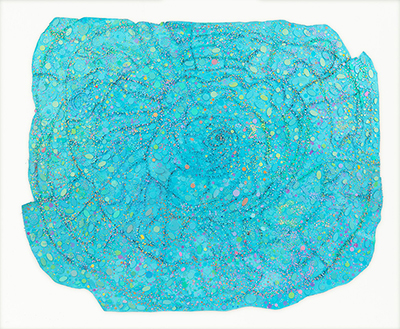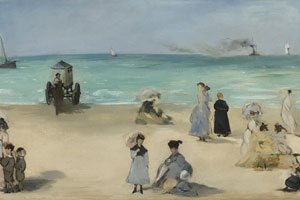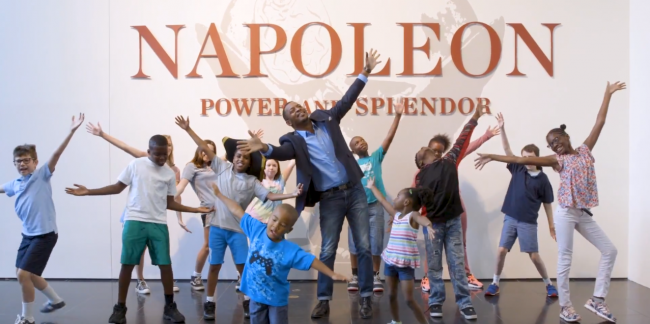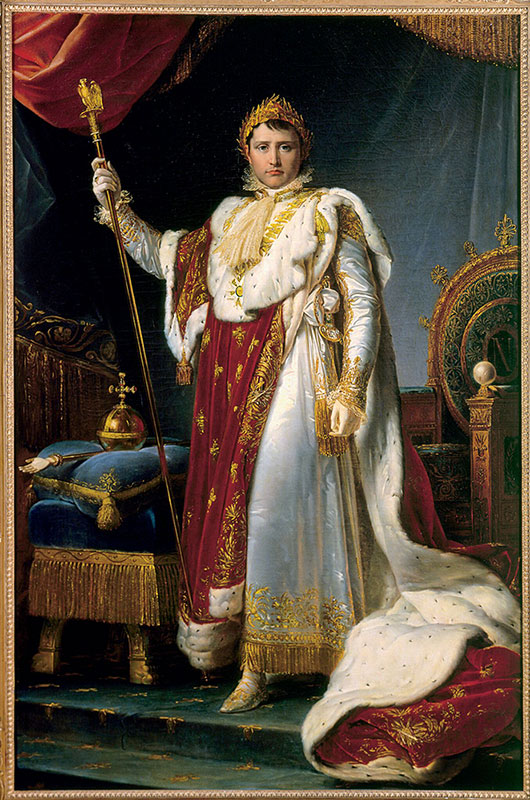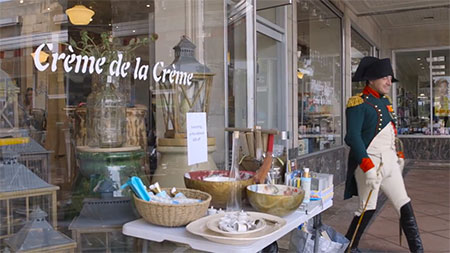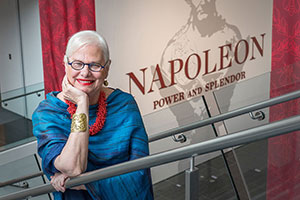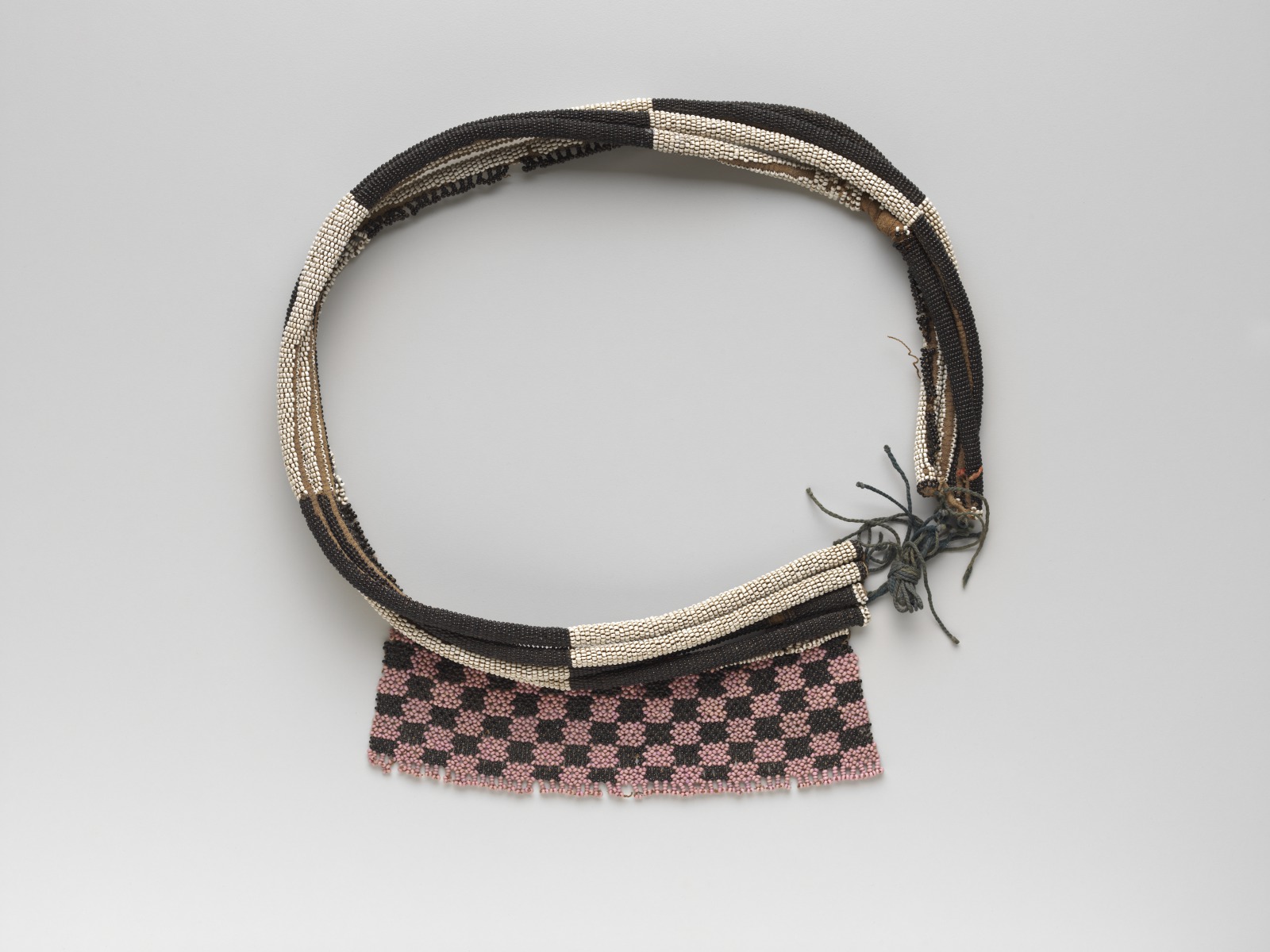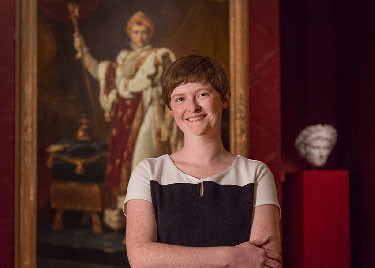A blog by staff and others about the Virginia Museum of Fine Arts
Full Circle: VMFA Curator Valerie Cassel Oliver on Howardena Pindell
August 21, 2018
Howardena Pindell has consistently broken new ground during her five-decades-long artistic career. In 1967, she was the first female African American to graduate from Yale University’s MFA program then began working as the first female black curator at the Museum of Modern Art in New York. Her diverse body of art—from abstract canvases to photography…
Manet’s Painting, On the Beach, Boulogne-sur-Mer
August 10, 2018
By Bruce Suffield While studying Édouard Manet’s painting, On the Beach, Boulogne-sur-Mer (Accession # 85.498), in the painting conservation studio, it was noted that the artist had used numerous and different brush strokes around one of the compositional elements. He had most likely changed the area around the edges of the bathing machine or bathing…
Napoleon: A VMFA Original Song
August 7, 2018
Inspired by Broadway’s Hamilton: An American Musical, VMFA created an original song and video about the exhibition Napoleon: Power and Splendor, now in its final weeks. France’s Napoleon Bonaparte was no Alexander Hamilton, but the two men had much in common. Both men emigrated from small islands in search of opportunity. Both joined the military…
Napoleon and Propaganda
July 31, 2018
In today’s digital age, every owner of a social media account serves as their own minister of propaganda. With each shared photo, observation, and announcement, we control our image and shape the way others perceive us. But even back in Napoleon’s day, paintings, clothing, decorative arts, and political cartoons served as propaganda tools. Napoleon: Power…
A Feast Fit for an Emperor
July 23, 2018
At VMFA’s Amuse Restaurant, in celebration of the current exhibition Napoleon: Power and Splendor, Chef de Cuisine Greg Haley’s thoughtful and refined Napoleon-inspired menu ranges from the casual Le Burger to a sumptuous Lobster Thermidor. This week, on the heels of Bastille Day and France’s World Cup victory, Chef Haley added a more down-to-earth, traditional…
Joie de Vivre in RVA: Live like You’re French for a Day
July 11, 2018
Though you may not have the opportunity to visit Paris, all it takes is a little imagination and some careful planning to craft a French-inspired staycation that will transport you from the River City to the City of Lights. Here’s your itinerary for a trés French day in RVA. Can Can Brasserie Photos © Can…
Image is Everything: Terry Melville Talks About Personal Branding
June 26, 2018
The concept of self-branding was revolutionary during the 19th century when Napoleon Bonaparte and his household worked diligently to craft his image as a war hero and later, as emperor of France. But today, one needs only to turn on the television or scroll though social media to see how self-branding has permeated our culture.…
Beneath the Surface of African Art: Zulu Beaded Ensembles, An Orientation
June 14, 2018
By Kathryn Brugioni Gabrielli, Assistant Conservator As an objects conservator and an emerging professional, I have had limited experience thinking beyond the theoretical when it comes to the care, preservation, and treatment of textiles. As such, I was especially excited at the prospect of my first project during my fellowship at the VMFA. After my…
Q&A: Celebrate African and African American Art: Ethiopia
June 11, 2018
In preparation for the upcoming VMFA Family Day event on Saturday, June 16, Natalie Feister, the museum’s Youth and Family Programs and Events Coordinator, answered a few questions about its Ethiopia theme and festivities, which include music and dance performances, vivid storytelling, and the opportunity to participate in collaborative projects such as a Community Independence…
Insights into Napoleon: Power and Splendor with Dr. Colleen Yarger
June 4, 2018
In Napoleon: Power and Splendor at VMFA, more than 200 exquisite works of art include major masterpieces of paintings, decorative arts, sculptures, and engravings, many of which are on view in the United States for the first time. The innovative exhibition offers an up-close encounter with the propaganda machine that modernized and legitimized the reign…
